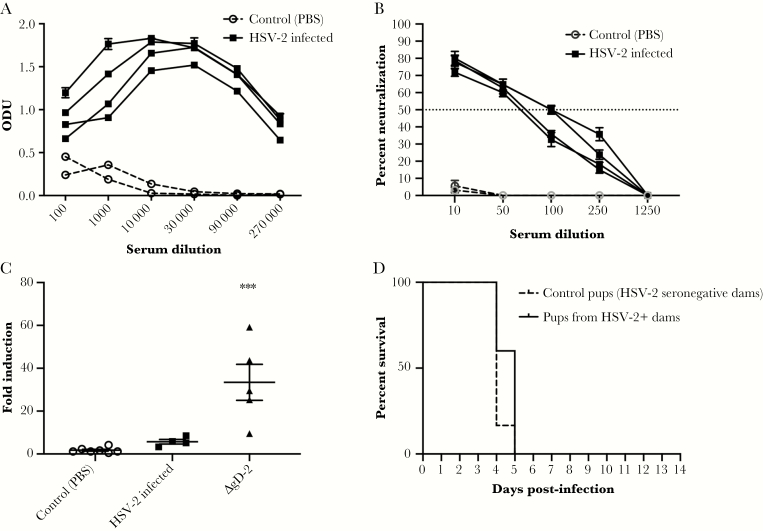Figure 6.
Antibodies generated in response to sublethal infection do not protect 7-day-old pups from herpes simplex virus (HSV). Female C57BL/6 mice were intranasally infected with 1 × 105 plaque-forming units (pfu) of HSV-2(4674) or phosphate-buffered saline (PBS) as a control and monitored for 2 weeks. (A) Blood was obtained from surviving mice and assayed for HSV-specific immunoglobulin G by enzyme-linked immunosorbent assay with results presented as optical densitometry units (ODU) at the indicated serum dilutions for n = 4 infected and n = 2 control mice. (B) The ability of the serum to neutralize HSV-2 was determined by plaque reduction assay; results for individual mice at each dilution are shown as percentage inhibition of viral plaques relative to cells infected in the absence of any mouse serum; the dotted line at 50% indicates the 50% neutralization titer. (C). Murine FcγRIV activation was measured using a reporter bioassay with HSV-2-infected targets and 1:5 dilution of serum from control, sublethally infected, or ΔgD-2 prime-boost immunized mice. Each point represents results for an individual mouse, and lines are mean ± standard error of the mean. Fold induction was compared by one-way analysis of variance (***, P < .001 for ΔgD-2-vaccinated versus control). (D) Pups born to control or HSV-2-seropositive dams were challenged intranasally on Day 7 with 103 pfu of HSV-2(4674) or PBS (n = 5 each).

